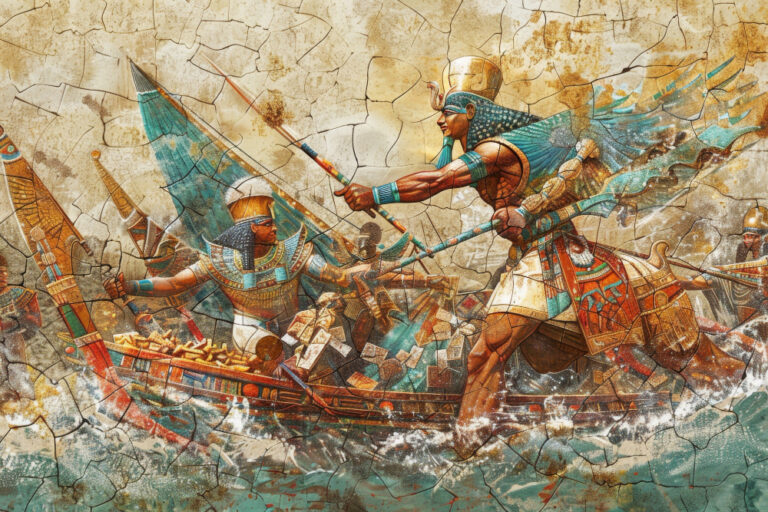Art has always been a reflection of human civilization, capturing emotions, beliefs, and stories across generations. Among the most fascinating forms of artistic expression is Ancient Artz, a term that encompasses the rich and diverse art traditions from early human history. From cave paintings to intricate sculptures, ancient art provides a window into the lives, cultures, and spiritual practices of our ancestors.
In this blog post, we’ll delve into the world of Ancient Artz, exploring its significance, key characteristics, and enduring influence on modern art. Whether you’re an art enthusiast, a history buff, or simply curious about the origins of creativity, this journey through time will inspire and enlighten you.
What is Ancient Artz?
Ancient Artz refers to the artistic creations produced by early civilizations, spanning from prehistoric times to the classical eras of Greece, Rome, Egypt, Mesopotamia, and beyond. These artworks were not merely decorative—they served religious, political, and social purposes, often telling stories of gods, rulers, and daily life.
Unlike contemporary art, which often prioritizes individual expression, Ancient Artz was deeply connected to communal identity and cultural traditions. Materials such as stone, clay, metal, and natural pigments were used to craft enduring masterpieces that have survived millennia.
The Origins of Ancient Artz
1. Prehistoric Art (Paleolithic to Neolithic Era)
The earliest forms of Ancient Artz date back to the Paleolithic period (30,000–10,000 BCE), with famous examples like:
- Cave Paintings (Lascaux, Altamira, Chauvet): These stunning depictions of animals and hunting scenes reveal early humans’ deep connection with nature.
- Venus Figurines: Small fertility statues, such as the Venus of Willendorf, symbolize early religious and cultural beliefs.
As societies transitioned to agriculture in the Neolithic period, art evolved into pottery, megalithic structures (like Stonehenge), and symbolic carvings.
2. Mesopotamian Art (3500–500 BCE)
Mesopotamia, the “Cradle of Civilization,” produced remarkable Ancient Artz, including:
- Ziggurats: Massive temple structures dedicated to gods.
- Cylinder Seals: Intricate carvings used for administrative and religious purposes.
- The Standard of Ur: A mosaic depicting war and peace scenes.
3. Egyptian Art (3100–30 BCE)
Ancient Egypt’s art was deeply tied to religion and the afterlife. Key features include:
- Hieroglyphics: A writing system combining art and language.
- Pyramids & Sphinx: Architectural marvels symbolizing eternal power.
- Tomb Paintings & Sculptures: Designed to guide the deceased in the afterlife.
4. Greek & Roman Art (800 BCE–500 CE)
Classical Ancient Artz introduced realism and idealism:
- Greek Sculptures (e.g., Discobolus, Venus de Milo): Celebrated human form and mythology.
- Roman Frescoes & Mosaics: Decorated villas with mythological and daily life scenes.
- Architectural Wonders (Parthenon, Colosseum): Showcased engineering and artistic brilliance.
Key Characteristics of Ancient Artz
- Symbolism & Ritualistic Purpose
- Many artworks were created for religious ceremonies, burial rites, or to honor deities.
- Use of Natural Materials
- Pigments from minerals, clay for pottery, stone for sculptures, and metals like gold for adornments.
- Stylized Representations
- Early art often followed strict conventions (e.g., Egyptian figures in profile).
- Narrative & Storytelling
- Art depicted myths, battles, and historical events.
- Endurance & Legacy
- Many Ancient Artz pieces have survived due to durable materials and burial preservation.
The Influence of Ancient Artz on Modern Creativity
The legacy of Ancient Artz is visible in:
- Renaissance Art: Artists like Michelangelo and Da Vinci drew inspiration from Greek and Roman sculptures.
- Neoclassical Movement: 18th-century art revived classical aesthetics.
- Contemporary Design: Elements like hieroglyphic motifs and geometric patterns appear in modern decor.
Even today, museums and archaeologists continue to uncover lost Ancient Artz, deepening our understanding of human history.
Where to Explore Ancient Artz Today
If you’re fascinated by Ancient Artz, consider visiting:
- The British Museum (London) – Houses Egyptian mummies and Mesopotamian relics.
- The Louvre (Paris) – Features Greek sculptures like the Venus de Milo.
- The Metropolitan Museum of Art (New York) – Showcases global ancient artifacts.
Final Thoughts
Ancient Artz is more than just historical artifacts—it’s a testament to humanity’s enduring creativity and cultural evolution. By studying these works, we gain a deeper appreciation for the artistic foundations that shape our world today.
Whether you’re an artist seeking inspiration, a historian unraveling the past, or simply an admirer of beauty, Ancient Artz offers a timeless connection to our shared heritage.
What’s your favorite piece of ancient art? Share your thoughts in the comments | Actvid


